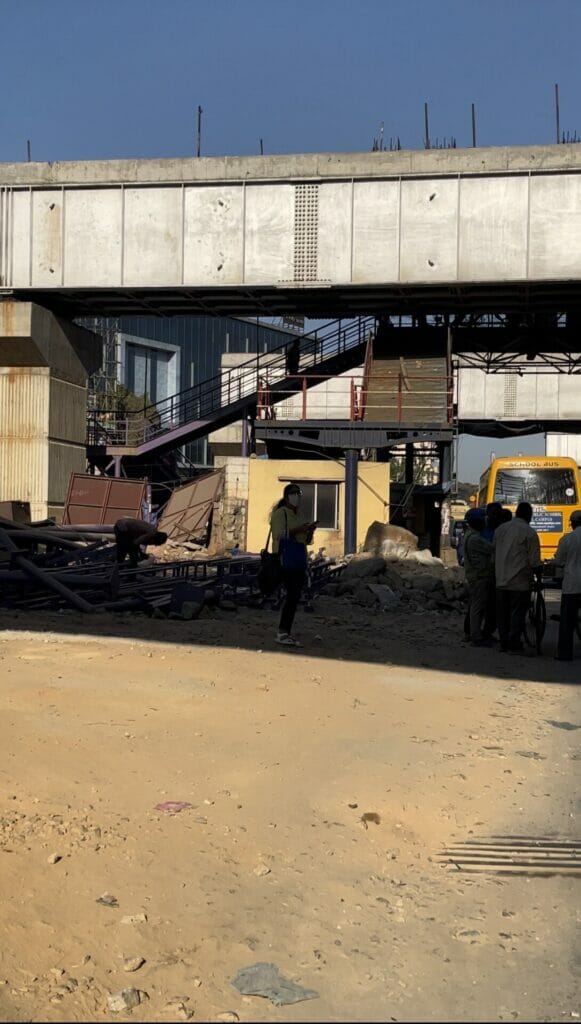“I have been selling coconuts here for 30 years and one thing that I can assure you is that this line to Whitefield will be of great help to commuters,” says Arif, a coconut seller outside KR Puram metro station. “Everyday I see people running to catch buses and waiting hours at the bus stop. With the metro coming, traffic too should reduce.”
The much awaited KR Puram-Whitefield Metro line, likely to become operational in March, is expected to bring relief to thousands of daily commuters, most of whom are tech professionals working in and near Whitefield.
Metro ridership is expected to increase
Phase I of the Baiyappanahalli-Whitefield corridor (Purple line expansion) includes the 13-kilometre section from KR Puram to Whitefield. Anjum Parwez, director of BMRCL, said that once in service, the Metro trains on this 12-station route will cover the distance in 23 to 24 minutes.

The stretch will also have a walkway access directly linked to the Information Technology Park Limited (ITPL) campus from the Pattandur Agrahara Metro Station.
Read more: Living with the metro construction: Safety, pollution and accessibility concerns
Two six-coach trains are now being tested for safety and other parameters by BMRC. The inspection work includes checking of tracks, station safety, signaling, and electrical installations.
The completed Baiyappanahalli-Whitefield stretch will include stops at Whitefield, Channasandra, Kadugodi, Pattandur Agrahara, Sadaramangala, Nallurhalli, Kundalahalli, Sitharama Palya, Hoodi Junction, Garudacharpalya, Saraswati Nagar, and KR Puram.
Until the entire stretch is open, the BMRCL will operate bi-directional feeder services between Baiyappanahalli and KR Puram, which is expected to be a major convenience to commuters.
Once the Whitefield line becomes completely operational, the metro ridership is expected to increase by 3.5 lakhs as it seamlessly connects Whitefield, a major IT corridor and residential hub, with the city’s central business district and other areas.
Pollution and pedestrian safety concerns
However, due to the ongoing legal disputes between environmental and local authorities over the relocation of some 60 trees close to Benniganahalli Lake, this extension experienced numerous delays. And not all agree that it will ease traffic with more people using the metro. “I take this KR Puram bridge almost every other day as my school is nearby and all I see is excessive dust and traffic,” says Kimakshi Khanna, a student. “None of us can stand here without masks as it becomes difficult to even breathe at times.’’

With the launch of metro services just two months away, I decided to visit this stretch and see the situation on the ground for myself. I took a metro from Jayanagar to the current last stop nearest to Whitefield i.e Baiyappanahalli, which also houses the metro depot. From Baiyappanahalli station I could see very little construction going on. I sought the help of a metro official and learnt that construction is happening mainly near KR Puram and not anywhere near Baiyappanahalli.
I took an auto to the KR Puram metro station, which is located in the middle of a highway and near a flyover. I did not see any division between the roads and the construction site. The construction of what looked like a flyover was going on as well. I could not observe any kind of safety precautions being taken by workers or for the crowds of pedestrians along the road.
The metal and other construction material were haphazardly lying on the road. People find it difficult to cross the roads because of heavy traffic and dust coming from the construction site. The construction site is uncovered and generates huge amounts of dust, which has covered buildings nearby, giving them a brownish hue.
I did not observe any police personnel present around.
Read more: Namma Metro is not designed for inclusivity
There are no offices or shops near the metro site. There is one foot over bridge for crossing. Most people use it to reach the metro station since crossing the road at ground level is difficult and dangerous with this being one of the busiest roads in the city. There is a bus stop by the side of the construction.
People have to wait for the bus in the construction areas. I tried talking to some of the workers about the construction but they were hesitant as there was no supervisor present.

One interesting thing is that construction work is happening all through the day and night. At night, the shift changes and another set of workers arrive to take over from the day shift. However, all the noisy machine work is done during the day so as not to disturb the neighbourhood at night.
Namma Metro in 2023
As per its current schedule, BMRCL is likely to operationalise close to 40 kilometres of lines under Phase II in the current year. The most important one being the linking of two major IT corridors–Whitefield and Electronics City—after years of delay.
The former is an extension from Baiyappanahalli while the latter will be the new Yellow Line from R.V. Road to Bommasandra (19 kilometres), with a metro-cum-road flyover between Ragigudda and Silk Board.
The other lines expected to be completed are Kengeri to Challaghatta of the Purple Line on Mysuru Road and Hesaraghatta Cross to Madavara on the Green Line on Tumakuru Road.